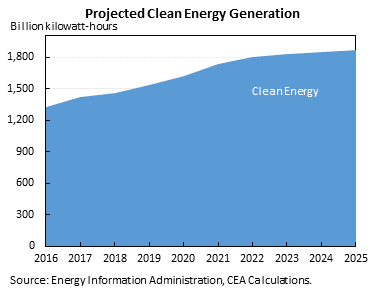
At the North America Leader’s Summit President Obama will be joining the Prime Minister of Canada Justin Trudeau and the President of Mexico Enrique Peña Nieto in laying out a historic continental goal of 50 percent clean power generation by 2025. Meeting the goal will involve clean energy development and deployment (including renewable, nuclear, and carbon capture and storage technologies), clean energy innovation (through the Mission Innovation initiative), and improved energy efficiency. To support the goal of 50 percent clean power generation, the three countries plan a range of initiatives, including cutting power waste by aligning ten appliance efficiency standards or test procedures by 2019, 5,000 megawatts of cross-border transmission projects to facilitate deployment of clean power, a joint study of the opportunities and impacts of adding more renewables to the electric grid on a continental basis, and the greening of government operations to 100 percent clean energy by 2025.
This work complements another set of initiatives on reducing methane and black carbon emissions, and further advancing clean transportation. Notably, all three countries are also taking important cross-cuttings steps, including aligning methods for estimating the social cost of carbon and completing comprehensive Midcentury Strategies for driving down greenhouse gas emissions.
These efforts will not only reduce the impacts of climate change and help all three countries meet their commitments under the Paris agreement, but they will also provide important benefits for the economy as a whole and support hundreds of thousands of jobs.
Real Economic Benefits from the 50 Percent Clean Energy Target
A starting point for thinking about the economic benefits is to consider what would happen if we do not take action to reduce carbon emissions.
The White House Council of Economic Advisers has estimated that if a delay in cutting carbon emissions causes the mean global temperature to stabilize at 3 degrees Celsius above preindustrial levels instead of 2 degrees, that delay will induce annual additional economic damages of approximately 0.9 percent of global output and impose dangerous economic and security risks that are hard to fully quantify. Now, 0.9 percent of output in the United States alone in 2015 was over $160 billion. And these costs would not just happen once—they would be faced year after year.
But looking at the costs of inaction is only the beginning of considering the benefits. A quickly growing clean energy sector will bring additional benefits by spurring innovation and growing employment in these industries.
In fact, we project that jobs supported by the clean energy (hydro and non-hydro renewables and nuclear), energy efficiency, and new transmission sectors of the economy will continue to rapidly grow: from under 700,000 today to over one million jobs supported on average through 2025.

Relevant Trends in Clean Energy Making the Target Possible
A dramatic transformation of our energy system is underway, which will help all three countries meet the new clean energy target. Deployment of clean energy is growing at an unprecedented pace and the cost of new technologies is plummeting. The share of the share of non-hydropower renewables has increased from roughly 3 percent in 2008 to 7.3 percent in 2015. Wind and solar energy alone currently make up over 5 percent of generation and were less than 1.5 percent in 2008. This growth is expected to continue apace, with the U.S. Energy Information Administration (EIA) projecting wind and solar generation to nearly double by 2025 under business as usual.

But wind and solar are only part of the story. With nuclear and hydro and non-hydro renewable energy, clean energy is already providing roughly 35 percent of electricity generation, and by 2025 EIA projects 43 percent clean power generation under their reference case. Energy efficiency is growing as well, reducing our demand for energy. Since 2008, utility spending on energy efficiency, which saves households money by cutting energy use, has grown from just over $5 billion to over $8 billion in 2015. Reducing energy demand will make it easier for clean energy to provide a larger share of our energy needs.
These large increases in deployment come amid notable cost declines. Since 2008 the cost of onshore wind has declined over 30 percent and solar over 70 percent. LED lighting has seen a nearly 90 percent decrease in cost per kilo lumen since 2008. The cost of Li-ion battery packs for electric vehicles have fallen from above $1,000/kWh in 2007 to under $410/kWh in 2014, with some estimates coming in as low as $300/kWh. A recent report by the White House Council of Economic Advisers has shown that innovations in energy storage—and smart markets that allow for electricity demand to respond to energy prices—provide an opportunity to ease the integration onto the electric grid of increasing quantities of renewable energy resources. These innovations can complement greater transmission interconnection to provide a more resilient grid that can incorporate geographically dispersed clean energy generation across North America.
This all means that we are on a road towards a cleaner energy future, driven in part by initiatives already underway. Cooperation across North America will further accelerate this trend. If we project the current trends to reach the 50 percent North American target, we will see American clean energy growing to nearly 1,900 billion kWh of generation by 2025. Moreover, energy efficiency is also projected to grow, reducing the total generation demanded and contributing to reaching the 50 percent target across the three countries.

The 50 percent clean energy target across North America will bring us closer to our neighbors, help reduce the harmful impacts of climate change, and have clear economic benefits for American households.



